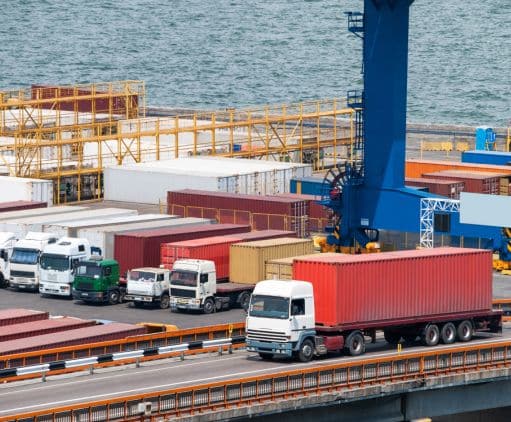What is Drayage?
Melton Logistics – 11/14/2024
In transportation and logistics, drayage plays a crucial role in connecting the dots between ports and other modes of transportation. This often-overlooked service bridges the gaps in supply chains, covering the shorter distances that may be forgotten about when looking at an overview of your supply chain. But what exactly is drayage, and why is it so important? Let’s take a look at the significance of drayage.
What is Drayage in Shipping?
Drayage refers to the short-distance transport of goods, typically within the same metropolitan area. It’s most commonly utilized during multimodal transportation, where cargo is moved between different modes, such as from a boat to a truck, or from a truck to a train. Often, the freight can’t move directly from one mode of transport to another without first being moved, which is where drayage comes in.
Does Drayage Have to Be To/From a Port?
While drayage is most often associated with ports, it is not exclusive to port operations. Drayage can occur at any major transportation hub, such as airports, rail yards, or warehouses. Containers arriving on ships need to be transported to nearby rail yards, distribution centers, or warehouses, making port drayage a frequent and critical task in global supply chains.
Some examples of different types of drayage are as follows:
Inter-Carrier Drayage: Normally seen when goods are transported from one type of transport method to another via a different carrier. Exp, from rail transport to a trucking service.
Intra-Carrier Drayage: Movement of gods by a single carrier, but still transferring from one transport method to another.
Expedited Drayage: This service ensures cargo reaches its destination quickly, particularly used for perishable goods. Exp: distribution centers to local grocery stores.
Door-to-Door Drayage: Used mostly in e-commerce services, door-to-door drayage moves cargo from the transport hub or distribution center, directly to the final customer.
Why is Drayage So Important?
Drayage plays a key role in the larger transportation process, particularly in intermodal shipping. Here’s why it’s so crucial:
Intermodal Transfers: Drayage connects different transportation modes like ocean, rail, and truck. Without it, goods would sit idle, and the entire supply chain would slow down while waiting to load.
Speed and Efficiency: It ensures timely delivery of goods, helping businesses avoid delays and keep products flowing smoothly through the supply chain.
Localized Transport: It allows for the swift transport of goods within a smaller, local region, providing the necessary last-mile (or even first-mile) link that long-haul trucks, ships, or trains may not be able to handle on short notice.
Drayage services, while not often spoken of, are key to ensuring a seamless and smooth transition from warehouse to transportation, minimizing the ripple effect of slow-moving freight.

What’s the Difference Between Drayage and Other Types of Driving?
For drivers who haul drayage, their job can differ from other types of trucking and driving in several ways:
Shorter Distances: Drayage typically covers much shorter distances, usually within 50 miles of a port or warehouse. In contrast, long-haul trucking can involve cross-country trips that span several hundred miles for one run.
Port and Rail Expertise: Drayage drivers are often more experienced in handling the specific regulations, equipment, and processes involved with ports and rail yards. ( For drivers working in these environments frequently, they might need certifications to operate here such as the Transportation Worker Identification Credential (TWIC) to ensure access to secure areas at ports.)
Time-Sensitive Operations: Due to port congestion or rail schedules, drayage services operate on tight time constraints and drayage drivers may have stricter deadlines compared to other types of trucking.
Frequent Hand-Offs: In drayage, freight is often handed off between multiple parties- whether moving from a port to a warehouse or from one carrier to another. This contrasts with long-haul truckers, who may handle the same load from pickup to delivery without transfers.
Drayage is a vital link in the logistics chain, especially for businesses relying on intermodal shipping with fast turn-around times. While it’s often associated with ports, it plays a much broader role in local and regional freight movement. Its importance lies in connecting major transportation modes and ensuring the smooth, and timely flow of goods. Melton Logistics can take care of your drayage services and beyond – view our services page for more information.
